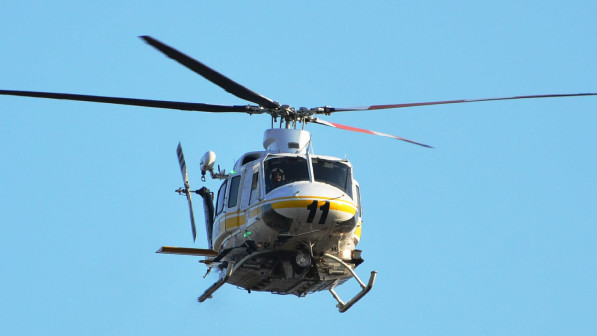- Los Angeles County Fire Department
- San Diego Fire-Rescue Department
Los Angeles County Fire Department
Los Angeles County Fire Department has a storied history with NVG, beginning on June 16, 1974, the first-night water drops were made on a wildfire on the Angeles National Forest with Los Angeles County Fire Department’s Bell 204B helicopter. But the program ended all too soon in 1977, when an LA County Fire helicopter and a USFS helicopter collided while inbound to a heliport on the Angeles National Forest, killing one pilot and critically injuring others. The NVG program was halted while fire officials reevaluated safety protocols and prepared to try again.
“In the early summer of 2001, we began our NVG program at the same time we started flying our S-70A Firehawks,” recalled Tom Short, Senior Pilot with LA County Fire Air Ops.
“The Firehawks were already configured with NVG-compatible lighting systems and the Bell 412 fleet was modified during the winter/spring of 2000/2001.”
Tom is a long-time NVG user, having racked up over 34 years of experience since he completed US Army Aviator NVG qualification in 1984.
“I flew with early Generation II AN/PVS-5 ‘cut-a-ways’ NVG’s in the UH-1 and OH-58 aircraft,” he explained. “I stopped flying with the ARNG in the early 1990’s and did not begin using NVG’s until LACoFD started its program in 2001.”
Being a long-time practitioner of the art, Tom provided some details on the advantages of using NVG.
“Besides the ability to see areas of low and high fire intensity using our current model NVG’s, the biggest benefit is being able to see terrain and hazards (wires, towers, vegetation, “snags”, etc.) over and near the fire. The flight to and from the water source back to the fire can be flown safely and efficiently and once over the fire, targets can be identified easily, as well as ground units requesting suppression assistance and intelligence on the fire behavior. ”
But even though NVG can provide numerous advantages when fighting wildfires at night, there are also hazards associated with them.
“Because of the increased amplification of ambient light provided by the NVG’s (i.e. moon and starlight, artificial light – vehicles, light poles, headlamps, flashlights, cell phones, fusees, buildings, etc.) along with the fire itself, care must be taken to thoroughly evaluate the flight paths used to/from and over the fire at all times. Other operating aircraft lighting systems must be quickly identified and verified while flying on NVG’s over and near a fire so that the pilot can adjust and “de-conflict” from that traffic. Radio communications become very important while conducting night firefighting operations to allow adequate space to ‘see and avoid’ operations between aircraft operating in close proximity on night fires.”
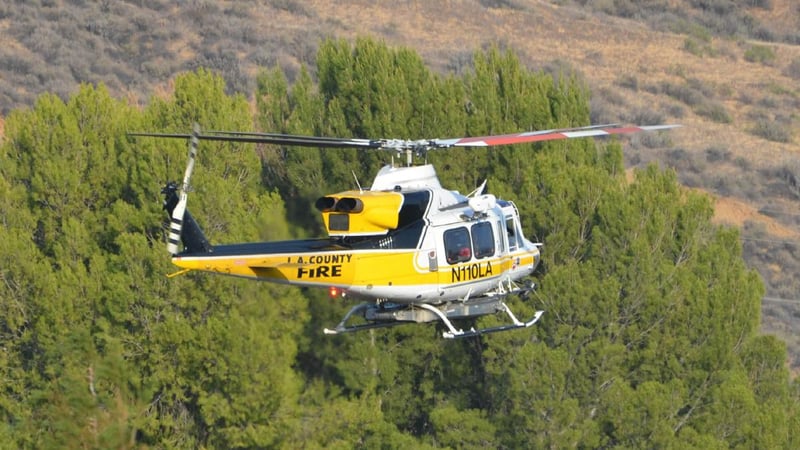
Orange County Fire Authority Night Vision Goggles Helo Landing from TracPlus on Vimeo.
In addition to the hazards, another limitation on using NVG is the cost. It costs approximately $90,000 each to equip LACoFD’s Bell 412 fireships with NVG-compatible lighting in the cockpit. Pricier aircraft, like the S-70A and S-70i, already come equipped with NVG compatible lighting, so the cost is incorporated into the overall aircraft cost, currently running almost $20 million apiece.
Needless to say, some training is required before Los Angeles County Fire lets pilots take their fireships up at night.
“Initial training on the use of NVG’s for a new pilot with no NVG experience takes approximately 10 hours of dual flight instruction followed by mission-specific training (night fire suppression, night hoist operations, night SAR, etc.) that can extend training to approximately 20-25 hours,” Tom said. “Pilots with no previous NVG experience are no longer hired by LACoFD. All of the pilots hired since 2007 have had previous NVG experience via the US military or previous EMS or public safety NVG experience.”
And Tom is sold on NVG performance.
“The ability to improve night vision by flying ‘aided’ is probably the single biggest safety enhancement that I have seen in my 38 years of professional helicopter flying. My NVG’s go on my flight helmet every night and stay on until the sun comes up. Nothing compares to the safety upgrade that an NVG program brings to an operation that conducts night operations in unlit mountainous terrain or overwater environments.”
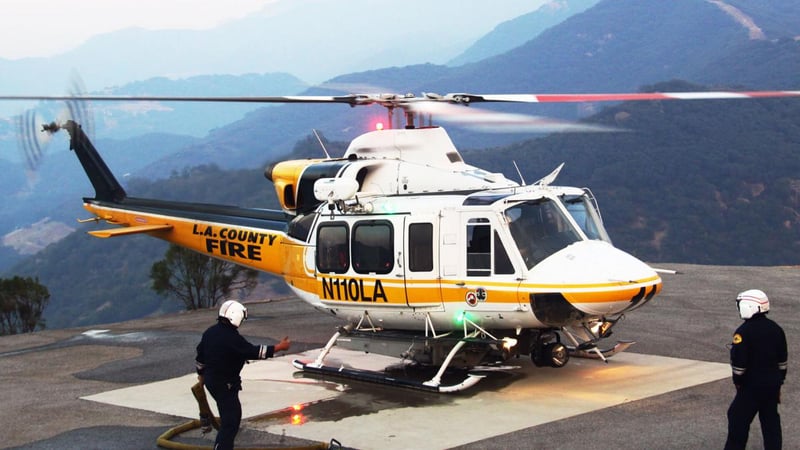
San Diego Fire-Rescue Department
Chris Hartnell, Senior Pilot with San Diego Fire-Rescue Department (SDFD) was the first pilot hired by SDFD in 2005 and has been using goggles since 2003.
“The benefit of goggles isn’t so much that they let you see the fire better, but they do allow you to transit safely to and from the heli-spot or the water point to the fire,” he explained.
“They provide daytime firefighting capability at night. NVG allows you to see people on the ground, and also allows you to see ground fires that you wouldn’t see during the daytime because of the [tree] canopy.”
He explained that, because NVG lets a pilot see through layers of smoke, he can see where the fire is burning and where the water needs to be dropped. It also allows him to see powerlines near the dip site.
NVG also allows a pilot to fight fires during the best time of the day, when winds have died down and when humidity is higher after dark (aside from Santa Ana wind days, in which the winds can actually pick up after dark). It means a pilot can perform water drops at night when there may still be danger to homes and other aircraft can’t assist firefighters doing structure protection.
“NVG is definitely a game-changer,” said Chris.
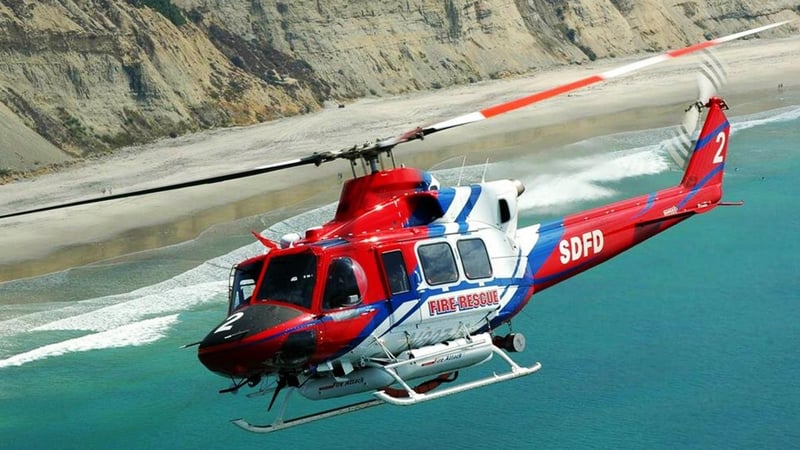
“I’ve been fighting fires for almost 30 years, and I get frustrated that the morning briefing is at 0700, but the first firefighting helicopter is off the ground around noon, which is when the winds pick up and the fire activity increases. I want to get out there first thing in the morning when you can make a difference.”
Although NVG allows a pilot to fly at night, there are limitations. “NVG intensifies light 6,000 times, but it doesn’t magnify anything, so you can see things and go places that you wouldn’t go if you had normal vision,” Chris cautioned.
“So if you don’t fly responsibly, they will out-fly you. That means that you have to be constantly alert that you’re not getting yourself in over your head.”
There are safeguards which pilots practice to avoid this danger. “To prevent that, you’re constantly looking through your goggles and around your goggles, verifying what you are seeing, like how much ash is on the windshield and how thick the smoke is. The biggest danger is if the goggles fail, can I get out of there. There are critical things you need to learn and know and practice religiously. Everybody wants to do a good job, but you have to understand that there is only so much you can do.”
As other pilots have noted, outfitting aircraft for nighttime operations isn’t cheap.
“Goggles are $13,000-$15,000 per pair. Every six months they have to be rectified for an additional $300-$400. We have three aircraft set up for NVG, we have 18 pairs of goggles which have to be managed, along with the cockpit lighting, which needs to have spare light bulbs for the instrumentation, so there’s a lot going on there. The aircraft also have to be equipped with a radar altimeter. The aircraft has to have an external light source, like a searchlight or spotlight. Overall, it’s a big investment which won’t pay off if you’re just going to use NVG a little bit.”
Training to use NVG remains paramount at SDFD.
“We require that guys be on goggles for at least a year operationally before we put them into the pilot’s seat,” said Chris.
“We send the guys up for an hour each night to train them.”
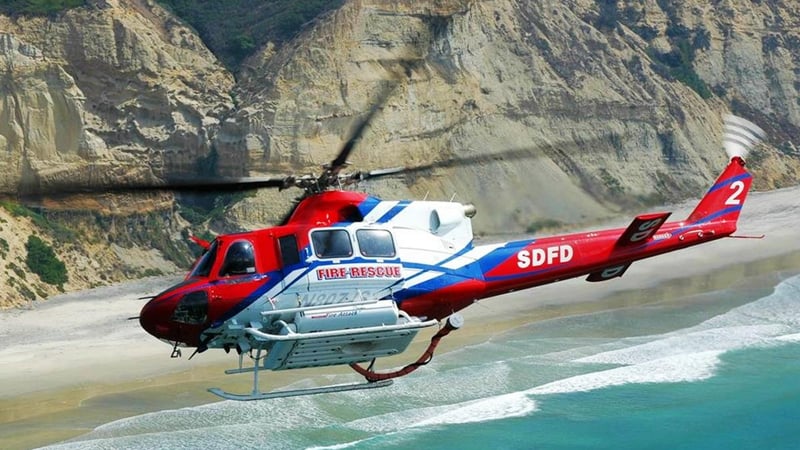
And insofar as dipping or snorkelling at night?
“Some agencies feel that they can snorkel fill at night. Even though our pilots have been flying with goggles for over a decade, we do not hover fill at night. It is fatiguing and we find that ground fill operations work better because they give your crew a break.”
Chris has found that NVG is vital to their operations, whether it be nighttime rescues or firefighting, and SDFD is willing to share what they’ve learned with others.
“I would recommend NVG to other agencies, but only with proper training. We would have no problem with another agency asking us to send one of our guys over to show us how to do this. We certainly don’t mind sharing what we’ve learned and the industry as a whole should do it that way. But an agency has to be all in if they’re going to use NVG."
"They have to train, stay current, and be proficient in what they are doing because it just takes one little mess up and it sets everybody back.”
Good advice for future NVG users.
